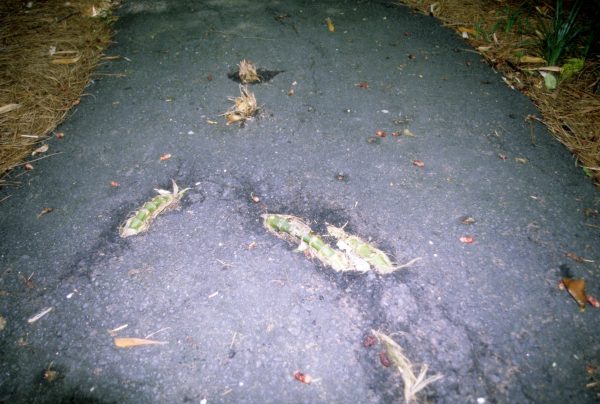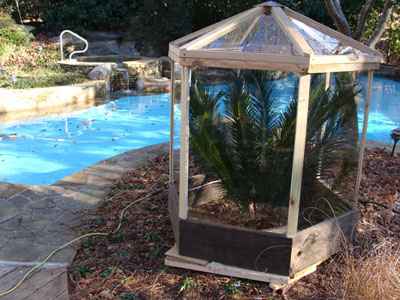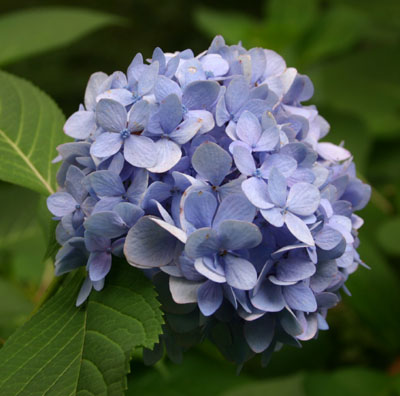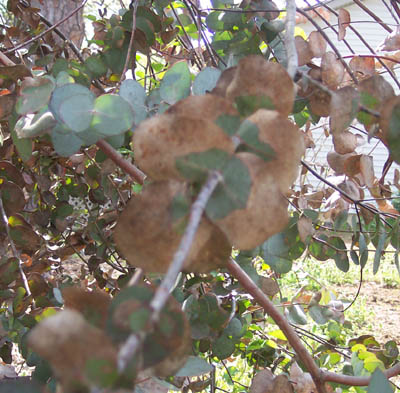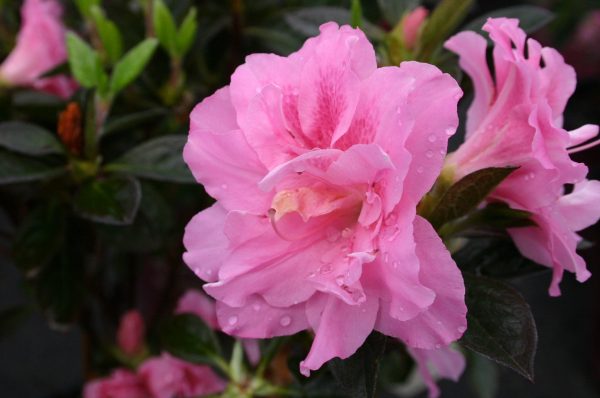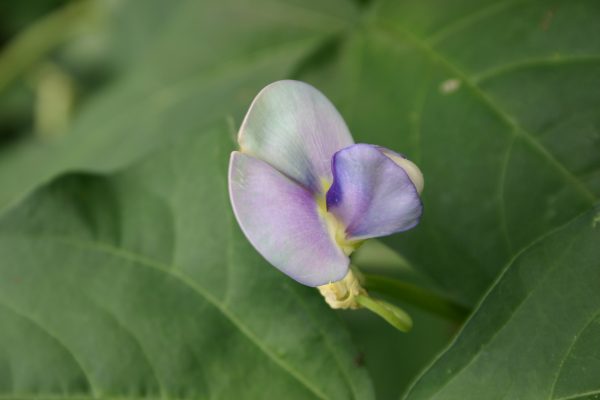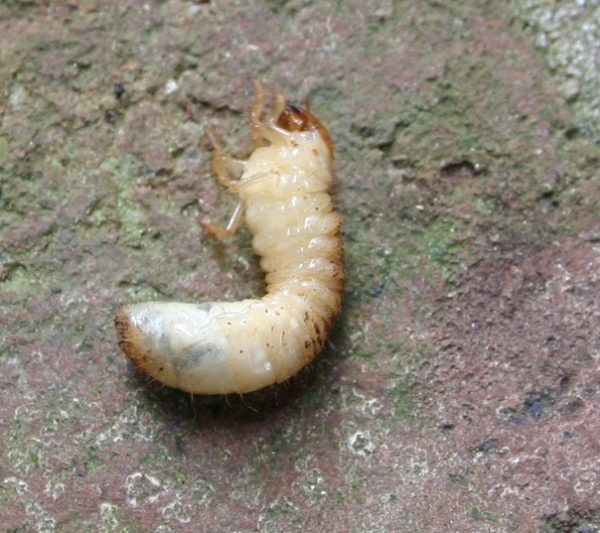Weather – Effect on Plants
Shannon Pable had a look of concern on her face when she described what happened to her Carolina jessamine vine. “It looked like the base of the vine exploded!” she confided. “Now all the leaves above that point are dead. Only one out of three of my vines survived the winter cold.”
I was actually glad, in a way, to hear her story, although I was sorry to learn her plants were dead. It confirmed what I saw on a jessamine vine the day after the mid-January severe cold snap. It was climbing a south-facing concrete wall next to a driveway. The previous sunny days warmed the vine, setting it up with perfect vulnerability for a night of pipe-cracking cold. The “exploded” description was correct. Frozen sap in the vine literally blew the bark right off of it.
GARDENIA The most common complaint I’ve heard in the past few weeks has been discolored gardenia leaves. Doubtless they are also suffering from the effects of cold weather. The good news about gardenias is that they produce blooms on branch tips that grow in April and May. If you presently have a gardenia with damaged leaves, simply pluck them off. The new growth that results will be full of fragrant blossoms in June.
MARCH TOMATOES It was exciting back in March when we had two weeks of warm weather mid-month. There were traffic jams at garden centers as enthusiastic gardeners hurried to plant their annual flowers and early tomatoes. The ensuing cold of early April brought them back to reality, though it didn’t get cold enough to freeze the plants. They haven’t grown much since though.
For heat-loving plants, soil temperatures determine how rapidly they become bigger. The earth stayed cool from March until mid-April. Even if you planted tomatoes weeks ago they likely are about the same size they were initially. Unless you have a fast-warming garden spot next to the south side of your home or garage, tomatoes planted after mid-April will produce fruit at the same time as those planted a month earlier.
AZTEC GRASS PERENNIAL? My wife is installing a “white area” in front of our house so when she saw plants identical to variegated liriope in a garden center, she grabbed eight of them. I thought nothing about it until I read the plant tag: Perennial Liriope Aztec Grass Ophiopogon jaburan.
I’ve had inquiries about Aztec grass before. A television landscape designer in south Florida seems to use it in just about every landscape he installs. When Atlanta-area gardeners ask if they can grow it here, I point out that Ophiopogon jaburan is listed as winter hardy only to 20 degrees F. I haven’t heard of a single person who has kept it alive over a winter in Atlanta. My advice is to be wary of this plant. It is very attractive but should only be considered an annual. If you want a perennial groundcover be sure to get variegated liriope: Liriope muscari Variegata.
DAMAGE TO CENTIPEDE My colleague Randy Drinkard says he has seen dead areas in centipedegrass lawns, which he suspects to be cold injury. Remember that the biggest determinant of cold damage to centipedegrass is mowing height. Mow your centipedegrass (and zoysiagrass and bermudagrass) lawns no higher than one and one-half inches to avoid most winter-related damage.
Remembering the March cold snap of 1996, which caused later rose and hydrangea shows to be cancelled because all the flower-making branches were frozen, this spring has actually been uneventful. Trim off any cold-damaged leaves or limbs you encounter and enjoy the beauty April and May bring to Atlanta each year.



